Clifford Garstang's Blog, page 110
January 30, 2012
The New Yorker: "Los Gigantes" by T. Coraghessan Boyle

February 6, 2012: "LosGigantes" by T. Coraghessan Boyle
Q&Awith T.C. Boyle (As of 9:20 pm on 1/30, the Q&A isn't available, so if it says anything useful about the story, I don't know what it is. I'll check back and edit this post if necessary.)
Allegory? Here's the story: In some unnamed Latin Americancountry, at some point in time (the President's limo is a Duesenberg, thepolice van is a Black Mariah, there are radios and electric fans, but no TV andno Airconditioning), the President's people have rounded up a lot of very largemen (the narrator is a giant—nearly 7 ft. tall, weighs 420 pounds) to breedthem with very large women, hoping to develop a race of giants for themilitary. (The narrator is told they're also breeding little people) Butdespite the fine food he receives from his keepers, the narrator rebels, makingtwo half-hearted escape attempts before finally, tumultuously freeing himselffrom the chains that hold him.
The only way this story does anything for me is if I give ita political spin. The narrator and his fellow breeders represent the enslavedlower class in America, and the President's men stand for the ruling corporateclass who need them to breed and obey in order to sustain those in power. Butour narrator rebels, and his ambition is simply to love his small wife and tohave normal-sized children—the middle class that doesn't do the powerful anygood.
Okay, that's a stretch, I realize. But if not that, what'sthe point of this odd story?
Published on January 30, 2012 18:21
Authors Unite (on Facebook)
 Authors Unite is NOT a soccer team made up of writers (although that's not a bad idea). It is, instead, an index of Author Pages on Facebook, the brainchild of T.J. Forrester, author of Miracles, Inc.
Authors Unite is NOT a soccer team made up of writers (although that's not a bad idea). It is, instead, an index of Author Pages on Facebook, the brainchild of T.J. Forrester, author of Miracles, Inc.More and more authors are creating "Author Pages" (what used to be called Fan Pages) on Facebook--a place to attract readers and to share news about books and other publications. It's one more thing we do to get the word out about our work and promote the sales of our books. (Mine is here: Clifford Garstang -- Author.)
If you are a writer with an Author Page, go to Authors Unite and add your page to the index. If you "Like" the page and begin to "Like" the pages of others in the index, gradually the number of "Likes" on your page will increase. (Most likely. Heh.)
And, if you are a reader, check out Authors Unite -- you may find information about some writers you weren't aware of before!
Published on January 30, 2012 11:08
January 27, 2012
Tips for Writers: Learn Anglo-Saxon
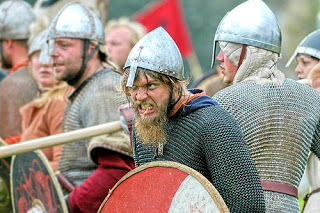
You may have heard—ormaybe you haven't—thatgiven a choice, a writer should choose an Anglo-Saxon word over one with Latinroots. Or at least that's what more than one teacher has told me. English wordsof Anglo-Saxon origin tend to be "closer to the soil"—concrete and precise, shorter, sharper—whereas words of NormanFrench origin (which infiltrated the language following the Norman Conquest)are more elevated—softer,vaguer, and longer.
Using a Latinate word isn't wrong, obviously, but as thisarticle suggests, word choice definitely plays a role in establishing the voiceof your writing: WordOrigin Influences Your Writing Voice. For example, for both rhythm andsound reasons, I like to end a paragraph with a strong word, something withpunch. But if an educated person is speaking, he or she may tend to useLatinates.
Last week I mentioned Strunk & White's The Elements of Style. One of that book'spronouncements is "Avoid fancy words." This is good advice. To that end: "Avoidthe elaborate, the pretentious, the coy, and the cute. Do not be tempted by atwenty-dollar word when there is a ten-center handy, ready and able.Anglo-Saxon is a livelier tongue than Latin, so use Anglo-Saxon words. In this,as in so many matters pertaining to style, one's ear must be one's guide: gut is a lustier noun than intestine, but the two words are notinterchangeable, because gut is ofteninappropriate, being too coarse for the context."
Here is a listof some common words and comparative derivations. And, of course, a gooddictionary will be a help. Look for words that are from Old English rather thanOld French.
Published on January 27, 2012 04:41
January 25, 2012
Forthcoming Books: Stay Awake by Dan Chaon
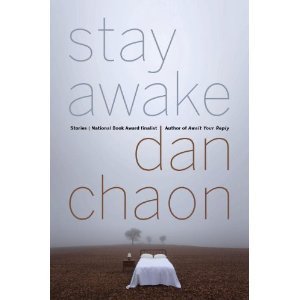 I didn't know Dan Chaon had a new book coming out until Iread Benjamin Percy's short preview in the February Esquire. It's a collectionof stories called Stay Awake, following Chaon's well-reviewed novels Among the Missing and Await Your Reply.
I didn't know Dan Chaon had a new book coming out until Iread Benjamin Percy's short preview in the February Esquire. It's a collectionof stories called Stay Awake, following Chaon's well-reviewed novels Among the Missing and Await Your Reply. Percy says this: "If Chaon's 2001 novel, Among the Missing, which was nominated for a National Book Award,contained some of the best fiction written in the past 20 years, Stay Awake is its darker, moreunsettling cousin. These stories are defined by disturbing unreliability, withjust enough room between the characters' memories, like the space between treesin a dark forest, to slip through, get lost." [Note to self: include lines likethis in future book reviews so that other people will quote them.]
Publication date is February 7, 2012, from Ballantine.
Published on January 25, 2012 05:07
January 24, 2012
Year of the LitMag: Prairie Schooner, Winter 2011: Ireland

Year of the LitMag: Prairie Schooner, Winter 2011Vol. 85, No. 4Ireland
The Winter 2011 issue of Prairie Schooner probably won't helpme figure out what kind of work the editors like. For one thing, it's the lastissue before the new editor took over (it was actually put together by aninterim editor). And for another, it's a special issue focused on Ireland. But,for that, it's quite an interesting issue, and by the end of it your probablyspeaking in an Irish brogue.
In fact, one the distinguishing features of the fiction hereis the voice that comes through loud and clear. In "My First Time" by AndrewFox, for example, two teenagers spend a lot of time talking about sex, and thedialect is thick—not so thick that it isn't understandable, but there's nomistaking where they are.
There's also a lot drinking in these stories, andseveral of them are set in pubs. "Peach" by Nuala Ní Chonchúir opens in a bar,where a pregnant woman is getting drunk. Thomas Lynch's one-act play, "LacrimaeRerum," also opens in a pub. As does "A Drop to Warm My Blood" by Aiden O'Reilly."My First Time" doesn't start in a bar, but it gets there soon enough. Apartfrom the voice and the drinking, the stories also have in common what thestories in Joyce's Dubliners do—theseare working (or sometimes out-of-work) men and women who don't get very farfrom their roots. The final story in the issue, "Sitting Ducks" by KathleenMurray, is about two former prisoners who work as orderlies in a hospital andcan't seem to stay out of trouble, but they count themselves lucky that they'vegot work. (I love the character of Viv in this story, an elderly, dementedwoman who seems to think she's already dead.)
The issue also has work from a couple dozen poets. What Iread of the poetry I enjoyed, but can't comment on.
When the new editor's first issue is out I'll revisit themagazine.
Published on January 24, 2012 16:50
January 23, 2012
The New Yorker: "Someone" by Alice McDermott
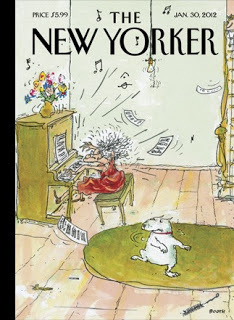
January 30, 2012: "Someone"by Alice McDermott
In the Q&Awith Alice McDermott, we learn that this "story" is taken from her novel inprogress, which, presumably, is the one the contributor notes tell us is comingout later this year. Even so, it seemsto work very well as a standalone story. It centers on Marie, a young woman inBrooklyn in the 1930s, who begins dating Walter, a man who walks with a limp.They begin to date—Marie's clueless and Walter imposes himself on her—butthings don't work out.
Early in the story we know Marie doesn't end up with Walterbecause she jumps ahead to the point in time where she tells her daughtersstories about Walter, to the point that they're sick of hearing about him.Presumably, in the novel, that's an important element. In this excerpt we alsosee Marie's older brother who has recently resigned the priesthood and movedhome. He tries to comfort her after Walter breaks up with her, but he doesn'tdo a very good job of it.
The writing is beautiful, as we might expect from McDermott.And for a "short story," there's enough plot. I sure hope more is going tohappen in the novel, though, because feels like it might be a bit slow. EvenMcDermott, in the interview, worries about it being a "novel about anunremarkable woman," and I think she's right to worry. But she's been therebefore and won the National Book Award, so maybe we're both wrong.
Published on January 23, 2012 16:30
January 20, 2012
Tips for Writers: Invest in Style
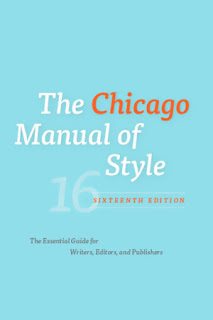
Tips for Writers: Invest in Style
And I'm not talking fashion here (although take a look atthe article in The Atlantic about Joan Didion and her early years at Voguehaving an impact on her writing, particularly on the details about clothes andaccessories). No, I'm talking about style as in: Usage, Grammar, Punctuation.
I have come to expect errors in Freshman Composition classes—kidsdon't seem to get the kind of education in grammar that they used to—but inpublished writing, or even writing submitted with the hope of publication, Idon't want to see mistakes. In published work, editors should catch theseproblems. In submitted work, writers should realize that editors have betterthings to do than fix their punctuation. As an editor, I'm likely to reject apiece that has errors. I'm busy. I'll just move on to the next story to findone that won't be so much work to get ready for publication.
But of course we're not all born with innate knowledge ofgrammar, and I confess that my understanding of punctuation changed dramatically when Ibegan teaching Freshman Composition. In order to teach the students, I had tomaster the subject myself, and I discovered a number of things I'd been doingwrong. So now, if I'm in doubt about a question of usage, grammar, orpunctuation, I look it up. And I can look it up because I have acquiredreference books where I can almost always find the answer. I've got three torecommend.
The first is Strunk & White's The Elements of Style. Get it. Read it. Keep it handy. (I have the FourthEdition, which I think is the latest.) It has several parts: Elementary Rulesof Usage; Elementary Principles of Composition; A Few Matters of Form; MisusedWords and Expressions; and An Approach to Style. This is more than just a guideto grammar; it's also about writing more clearly. And it's written in a waythat even Freshmen can understand. For example, under "Misused Words andExpressions" is the entry for Lay: "Atransitive verb. Except in slang ('Let it lay'), do not misuse it for theintransitive verb lie. The hen, orthe play, lays an egg; the llama lies down. The playwright went home and lay down. Lie, lay, lain, lying. Lay,laid, laid, laying." Under "An Approach to Style" is guidance on the use offigures of speech: "The simile is a common device and a useful one, but similescoming in rapid fire, one right on top of another, are more distracting thanilluminating. Readers need time to catch their breath; they can't be expectedto compare everything with something else, and no relief in sight. When you usemetaphor, do not mix it up. That is, don't start by calling something aswordfish and end by calling it an hourglass."
The second is the ChicagoManual of Style. I suppose there are some who read CMOS like a novel (as my mother used to claim she read cookbooks),but I keep it within reach for reference. It's so thorough that it has amassive and somewhat confusing index, but it's worth digging until you findexactly the right entry. (I have the 15th Edition, which is not thelatest, but it's an expensive book and so I'm not inclined to replace the one I'vegot. If you don't have an older one, spend the money to get the latest.) Here is the entry on the lie/lay distinction: "Lay is a transitive verb—it demands a direct object. It isinflected lay-laid-laid. Lie is an intransitive verb—it nevertakes a direct object. It is inflected lie-lay-lain."(Examples are also provided.) That's the same information as in Strunk &White, although in plainer terms. As for figures of speech, it appears that CMOS doesn't care about scrambled metaphorsor floods of similes.
The third reference book I keep handy is Bryan Garner's Modern American Usage. Garner isactually one of the CMOS authors, sothis guide is generally consistent with CMOS,but it's organization is a little more user friendly and it's text less sterile.Plus, it goes into more detail on matters of usage such as the lie/laydistinction, which takes up an entire page. It not only discusses thedistinction, it also examines the main ways in which writers incorrectlysubstitute one for the other. The entry begins: "Very simply, lie (= to recline, be situated) isintransitive—it can't take a direct object. But lay (= to put down, arrange) is always transitive—it needs a directobject . . . To use lay without adirect object, in the sense of lie,is nonstandard. But this error is very common in speech—from the illiterate tothe highly educated. In fact, some commentators believe that people make thismistake more often than any other in the English language. Others claim that it'sno longer a mistake—or even that it never was. But make no mistake: using theseverbs correctly is a mark of refinement." [The real mark of refinement, in myopinion, is editing. I can't edit what I've said, and so I may make this errorin speaking, but if I also make this mistake in writing, then I've made anerror in editing.] I've got the Second Edition; a new one came out last year.
I also have a few other reference books, including an MLA styleguide and a compact grammar guide, both of which occasionally come in handy,but I generally check Garner first and then CMOSif I have a question.
A writer should definitely make the investment in style. It's important.
Published on January 20, 2012 08:25
Year of the Dragon!
 Happy New Year! Actually, the new year begins January 23, but since President Obama has already released his Lunar New Year Message, I guess I can, too.Welcome, Year of the Dragon:Year of the Dragon - 1916, 1928, 1940, 1952, 1964, 1976, 1988, 2000, 2012, 2024, 2036, 2048The dragon enjoys a very high reputation in Chinese culture. It is the token of authority, dignity, honor, success, luck, and capacity. In ancient China, a dragon was thought to speed across the sky with divine power. Emperors entitled themselves exclusively as 'dragon'; their thrones were called 'dragon thrones', their clothes 'dragon gowns'.People under the sign of the dragon are lively, energetic and fortunate. They often can be leaders and try to go for perfection. When they meet with difficulties, they are not discouraged. But they are a little arrogant, and impatient, and women are over- confident. If they overcome these defects, they can have a brighter future.Best match: rat, monkey, rooster; avoid: dog, ox, dragon, rabbit(Check out all the Chinese Horoscope Signs.)
Happy New Year! Actually, the new year begins January 23, but since President Obama has already released his Lunar New Year Message, I guess I can, too.Welcome, Year of the Dragon:Year of the Dragon - 1916, 1928, 1940, 1952, 1964, 1976, 1988, 2000, 2012, 2024, 2036, 2048The dragon enjoys a very high reputation in Chinese culture. It is the token of authority, dignity, honor, success, luck, and capacity. In ancient China, a dragon was thought to speed across the sky with divine power. Emperors entitled themselves exclusively as 'dragon'; their thrones were called 'dragon thrones', their clothes 'dragon gowns'.People under the sign of the dragon are lively, energetic and fortunate. They often can be leaders and try to go for perfection. When they meet with difficulties, they are not discouraged. But they are a little arrogant, and impatient, and women are over- confident. If they overcome these defects, they can have a brighter future.Best match: rat, monkey, rooster; avoid: dog, ox, dragon, rabbit(Check out all the Chinese Horoscope Signs.)
Published on January 20, 2012 05:04
January 19, 2012
New Issue of Prime Number Magazine: No. 17

 Issue No. 17 of Prime Number Magazine went live today! (That's the 7th issue, if anyone's counting: 2, 3, 5, 7, 11, 13, 17)
Issue No. 17 of Prime Number Magazine went live today! (That's the 7th issue, if anyone's counting: 2, 3, 5, 7, 11, 13, 17)We happen to think it's another terrific issue, with stories by Brandon Patterson, Gleah Powers, Daniel B. Meltzer, and John Carr Walker; poetry by Kat Henry, Brian Simoneau, and Katherine E. Young; creative nonfiction by Kathryn Rhett, Ellen Kirschner, Jessica Erica Hahn-Taylor, and Mary Alice Hostetter; a craft essay by Buzz Mauro; reviews of books by Benjamin Buchholz, Xu Xi, Donna Miscolta, and Bruce Guernsey; and a terrific cover photo by Peg Duthie.
Please spread the word, signup at the site for the mailing list or "LIKE" us on Facebook (or both), and submit work.
Published on January 19, 2012 05:35
January 18, 2012
Forthcoming Books: The Flight of Gemma Hardy by Margot Livesey
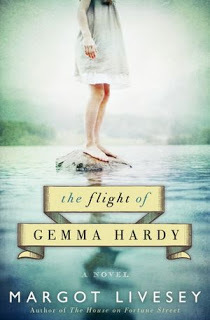 The Flight of Gemma Hardy by Margot Livesey will be published later this month. Margot is a terrific writer, and I suspect this will be a very popular book. Described as a modern take on Jane Eyre, it's set in the 1960s, in Scotland.
The Flight of Gemma Hardy by Margot Livesey will be published later this month. Margot is a terrific writer, and I suspect this will be a very popular book. Described as a modern take on Jane Eyre, it's set in the 1960s, in Scotland.I really liked her previous book, The House on Fortune Street, which I reviewed here. I noted then that Jane Eyre was referred to often in the novel, and I wondered if there were parallels that I was missing. I guess it's time for me to read that one . . . (That's right. I confess. I've never read Jane Eyre.)
Anyway. Look for the new Margot Livesey. Coming soon to a bookstore near you.
Published on January 18, 2012 04:00



